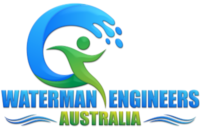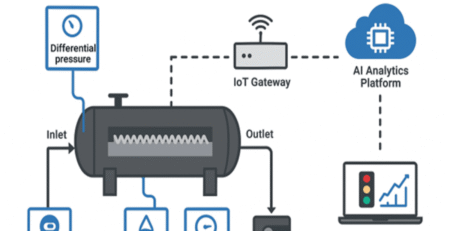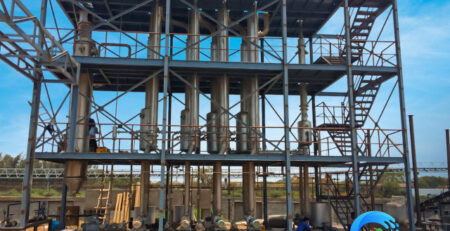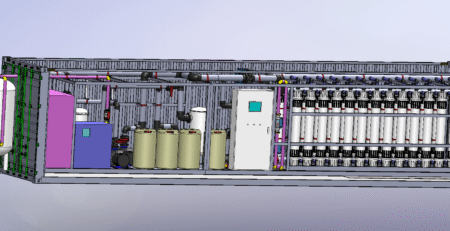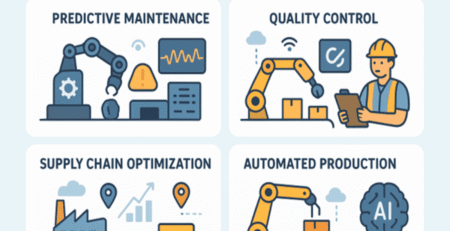Role & Importance of Effluent Treatment Plant in Textile Industry
If you are an industrial professional, you must consider water and wastewater management or wastewater recovery as one of your top priorities. Water is used in almost every type of industries, be it for their operation, manufacturing or domestic purposes and hence large quantity of effluent and waste water is discharged from industries. The chemical composition of industrial effluent is characteristics of various industrial processes from which the bi-product has been generated. The characteristics of effluent disposed from any industry should meet national/international regulatory standards, applicable as per the region. As a result, setting up an effluent treatment plant (ETP) to limit harmful wastewater discharge from the textile or garment business is required.
The textile sector is the most water-intensive in consumption and produces the most effluent in volume. Water is utilised substantially in textiles’ wet processing procedures as compared to the mechanical unit operations of spinning and weaving. Bleaching and dyeing are the major process in which highest volume of water is consumed in wet processing of textile. As per USEPA, any textile facility producing 20,000 Ib of fabric per day uses 36000 litres of water. Other major water consuming process in the textile industry are humidification in spinning process, steam generation from boiler feed water, cooling water tower, ion exchange, softener plant and domestic purposes.
Generation of effluent varies greatly, owing to the employment of old and modern technologies, as well as differences in the processing steps and types of machinery utilised. A high volume of wastewater generated from continuous operation like printing, finishing and preparatory dyeing is one of the biggest problems for the textile processing units. The effluent from textile processing industries is generally high in pH and dissolved solids. The alkaline waste water from preparatory process and wash water from continuous dyeing and preparations processes are most common large volume waste water generation process. Textile effluents has residual chemicals from various inorganic and organic chemicals, detergents, soaps and finishing chemicals which are added during wet processing of textiles to produce dyed textile products of the desired properties. High BOD and COD from cotton textile industry is often result of natural impurities such as waxes, proteins, and pigment, as well as of processing impurities such as spinning oils, sizing chemicals, and oil stains are added during desizing, scouring, and bleaching processes.
The goal of any environment professional dealing with effluent and waste should be to adopt technologies that pollute the environment as little as possible. There is increase in number of industries which envision zero liquid discharge from their factories with the help of ZLD Systems. The most widely accepted methods for achieving environmental safety are effluent treatment plants or Caustic Recovery Plant for Textile Effluents. Unfortunately, no single Effluent recycling plants or treatment process is adequate for all types of wastewater treatment or universally applicable. Each sort of effluent source represents a distinct problem that can only be addressed by taking various variables into account like effluent characteristics, quantity, amount of land available and its topography, drainage of the region, chemicals and dyes used and also amount of money available for construction, operation, and maintenance of Effluent treatment plants. When wastewater travels through the ETP, contaminants are eliminated and the water quality is improved to an acceptable/standard level, allowing for safe ultimate discharge to the environment. The three types of effluent treatment mechanism that are commonly employed are Physical, chemical, and biological. These mechanisms are applied at various treatment levels in Effluent Recycling Systems, which undergoes in sequence are briefly described below:
Preliminary Treatment:
Preliminary treatment involves physical mechanism to treat waste water It involves physical separation of solids, gritty materials and excessive oil and grease. Most common preliminary treatment is screening, sedimentation, and clarification. In preliminary screening of Effluent Recycling Systems, a uniform opening size screen is used to remove coarse solids like rags, plastics, wood etc. Suspended solids are removed using preliminary sedimentation treatment, while effluent is separated from solid in clarification stage.
Primary Treatment:
The physical & chemical mechanisms are involved in primary treatment of wastewater in Effluent treatment plants. The purpose of primary treatment is further removal of suspended solids and organic matter. Smaller and lighter particles settle more easily in the sedimentation tanks due to gravity. Horizontal flow sedimentation tanks and centre-feed circular clarifiers are the most frequent type of sedimentation tank installed. Collection of effluent in sump pits and subjecting them to rotating agitator or compressed air helps in equalization of the effluent. For effective secondary biological treatment, the pH of effluents needs to be maintained. Chemical unit processes are implemented in primary treatment using addition of chemicals. In neutralization, the pH of textile effluent is adjusted using dilute acid or flue gas. Fine suspended solids and colloidal particles are removed in coagulation, where flocs are formed using chemical coagulants like Alum or Fe2(SO4)3 and further flocculated in larger piece by using polyelectrolyte flocculants and gentle mixing. The larger flocs are easy to settle down by gravity.
Secondary Treatment:
Biological and chemical processes are involved in this effluent treatment level of Effluent recycling plants. The main purpose of secondary treatment in textile ETP is to effectively reduce the concentration of organic (BOD), inorganic compounds (COD) from effluent and removal of color, oil and phenols. Biological mechanism is considered effective treatment for textile effluents. These processes might be either aerobic or anaerobic in nature. Bacteria and other microbes consume organic matter as nutrition in aerobic processes, which results in coagulation and flocculation of Colloidal matter, oxidation of dissolved organic materials, conversion of Nitrogenous organic matter to ammonia, nitrite and, and then to nitrate.
Sludge digestion is primarily accomplished through anaerobic treatment. The efficiency of this process is determined by pH, temperature, effluent quantity, oxygen demand, and the presence of harmful contaminants. Most common biological treatment processes used for textile effluent treatments are:
- Activated Sludge Processes: This is the most versatile biological oxidation approach used for the treatment of textile effluent containing dissolved particles, colloids, and coarse solid organic materials. The wastewater is aerated in a reaction tank in which some microbial floc is suspended in this process. During oxidation of organic materials for bacterial synthesis, the aerobic bacterial flora degrades waste into carbon dioxide and a water molecule. The bacteria flora thrives and remains suspended in a floc, which is referred to as “Activated Sludge.” The effluent from the reaction tank is filtered and discharged after being separated from the sludge by settling. A portion of the sludge is recycled into the same tank to maintain a healthy microbial population for the next treatment cycle. BOD removal of 90-95% can be achieved in through this process.
- Trickling Filters: Another prominent secondary treatment technology that acts mostly under aerobic circumstances is trickling filters. The first treatment effluent is trickling or sprayed over the filter. A rectangular or circular bed of coal, gravel, poly Vinyl chloride (PVC), broken stones, or synthetic resins is typically used in the filter. On the surface of the filter medium, a gelatinous film of bacteria forms known as “Zooglea”. The oxidation of organic materials in the effluent to carbon dioxide and water is aided by these microbes.
- Aerated Lagoons: One of the most often utilised biological treatment processes is aerated lagoons. The effluent from the main treatment is aerated for roughly 2-6 days in a huge holding tank lined with rubber or polythene, and the produced sludge is removed. The removal effectiveness of BOD is up to 99%, while the removal of phosphorous is 15-25 %. Ammonia nitrification has also been discovered in aerated lagoons. The major drawback of aerated lagoon is requirement of vast amount of land and potential of bacterial contamination in the lagoons.
Tertiary Treatment:
Physical, chemical, and biological mechanisms are used to remove remaining suspended solids, dissolved solids, and other contaminants that were not eliminated during the previous treatment steps. Several disinfection agents, such as chlorine, ozone, and UV radiation, are commonly utilised depending on the wastewater quality. After this treatment, the wastewater is ready to be disposed of or reused.
Textile companies’ discharge of untreated effluent is detrimental to the environment, polluting adjacent water and land reservoirs. A textile effluent treatment plant, safeguards the environment from the negative effects of wastewater and effluent produced from the textile and garment industries. If the ETP is designed with consideration of textile industry requirement, it also assures that the processes and manufacturing units are being operated efficiently and ethically. The industrial manufacturers are increasingly facing strict regulations on discharge and waste. Their non-compliance leads to heavy fines or operational interference until the problem is resolved. A well designed ETP for textile effluent treatment, can help in reducing off-site treatment and eliminate municipal fees.
With growing awareness about environment, sustainability & climate change and government enforcing stringent regulations and standards, industrial organization have taken various mandatory as well as voluntary/participatory measures to reduce their overall impact on the environment. The treatment and control measures involved in preventing any type of environmental degradation from industrial organization and their processes needs to be precisely designed, constructed, and manufactured. The effluent treatment plant design consideration and calculation are involved in developing treatment methods for the specific type of effluent from an industry. The various factor involved in designing and manufacturing of effluent treatment plant are well understood by environmental professionals and involved expert organizations. An ETP manufacturer can help you in creating a technique that may turn such hazardous toxic effluent water into reusable water.
Effluent Treatment Plant Frequently Asked Questions
1) What is the importance of effluent treatment plant?
Before being released into the sea, rivers, or streams, effluent must be treated to minimize harm to the environment, wildlife, and public health. Manufacturers are accountable for properly handling their wastewater.
2) Why do we need to treat textile wastewater?
Because of the limited light penetration and oxygen consumption, it also affects aquatic life. Due to the presence of component metals and chlorine in the synthetic dyes, it might also be fatal to several types of marine life. Therefore, before being discharged, this textile wastewater must be treated.
3) What is effluent treatment plant (ETP) in textile?
The effluent treatment plant (ETP) Plant is made to address industrial wastewater-related problems. The textile industry uses a lot of river water in its operations, which results in a lot of wastewater that needs to be treated before being released into the environment.
4) How do you manage waste in the textile industry?
Waste can be minimised at all stages of production, including cutting, manufacturing, packaging, sewing, and finishing. Manufacturing large quantities of the same type in many colours or prints can help reduce waste since effective marker making makes cutting and production simpler.
5) What are the steps of activated sludge process?
Following are the steps:
- Treatment Steps
- Screening and Pumping
- Grit Removal
- Primary Settling
- Aeration / Activated Sludge
- Secondary Settling
- Filtration
- Disinfection
- Oxygen Uptake
